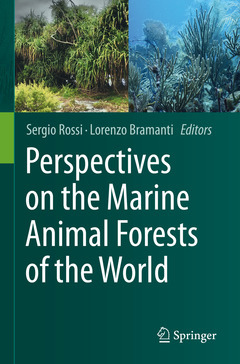Description
Perspectives on the Marine Animal Forests of the World, 1st ed. 2020
Language: English
Subjects for Perspectives on the Marine Animal Forests of the World:
Publication date: 02-2022
530 p. · 15.5x23.5 cm · Paperback
Publication date: 02-2021
530 p. · 15.5x23.5 cm · Hardback
Description
/li>Contents
/li>Biography
/li>Comment
/li>
Sergio Rossi
Sergio Rossi is a research scientist specialized in marine natural resources and biological oceanography, focusing his attention on the health indicators of coastal benthic populations, coastal biological processes, flows of matter and energy in the benthic-pelagic coupling system, in the transplantation and aquaculture of marine organisms, and the management and conservation of marine wildlife. He is especially interested in the processes and conservation of the marine animal forests of the world.
Lorenzo Bramanti
Lorenzo Bramanti is a Marine Ecologist expert in conservation, spatial distribution, population and metapopulation dynamics of benthic suspension feeders. His field of research is at the interconnection between functional ecology and conservation biology, focussing on the demographic processes regulating the dynamics of long living species, in particular corals, and their implications for conservation and marine spatial planning.




